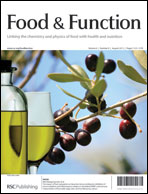Obesity and insulin resistance are the key factors underlying the etiology of major health problems such as hypertension, diabetes and stroke. These important health issues lead researchers to investigate new approaches to prevent and treat obesity and insulin resistance. Good candidates are the phytochemical compounds that have been extensively studied in the field. Therefore, the aim of this study was to test whether sulforaphane (SFN, 1 mg kg−1, 4 months treatment), a potent inducer of antioxidant enzymes present in cruciferous vegetables, had some beneficial effects on obesity and insulin resistance induced by a highly palatable (HP) diet in male Wistar rats. Glucose tolerance, serum and hepatic lipid levels, lipid profile, ALT, AST, urea and creatinine, GLUT1 and GLUT3 levels in the cerebral cortex, hippocampus and hypothalamus were analyzed. Glucose tolerance was lower in the HP diet groups, especially in the HP group treated with SFN. Except for the liver triacylglycerols, no differences were found in serum lipids, hepatic and kidney markers of the HP diet groups. Although expression of GLUT1 was similar between groups for all three brain structures analyzed, expression of GLUT3 in the cortex and hypothalamus had a tendency to decrease in the HP diet group treated with SFN. In conclusion, SFN at the specific dose was able to accentuate glucose intolerance and may affect GLUT3 expression in the cerebral cortex and hypothalamus.


 Please wait while we load your content...
Please wait while we load your content...